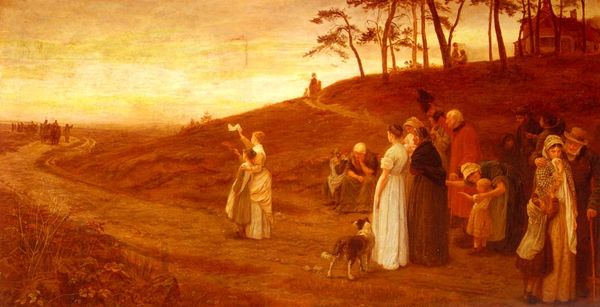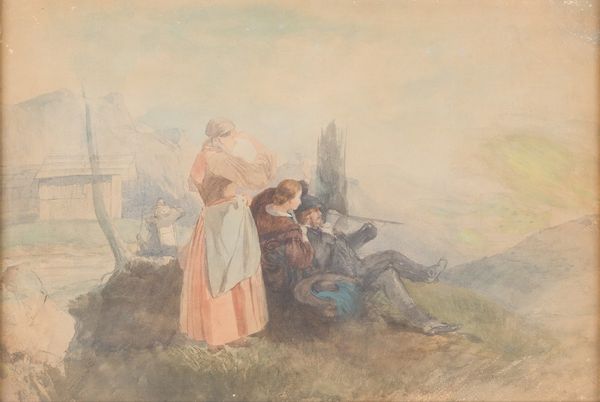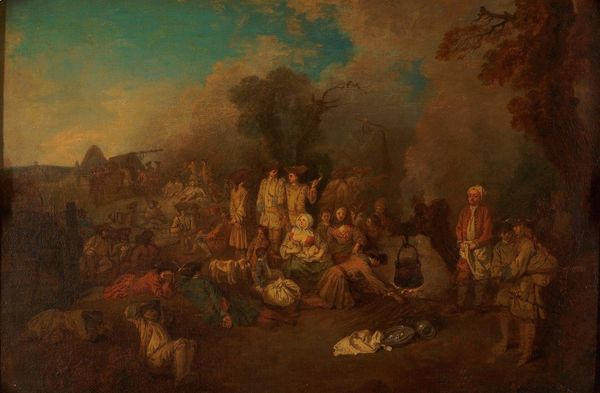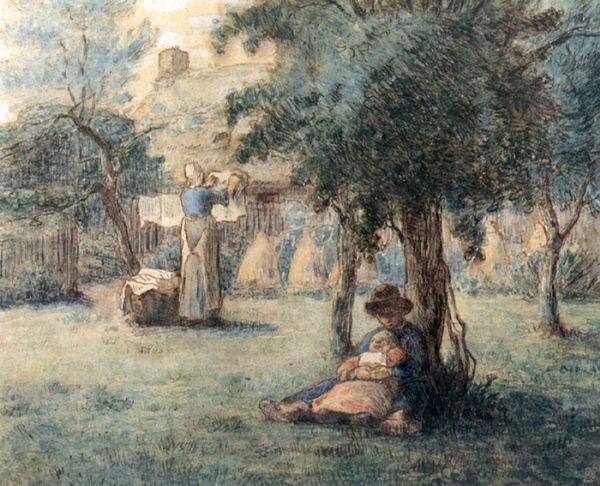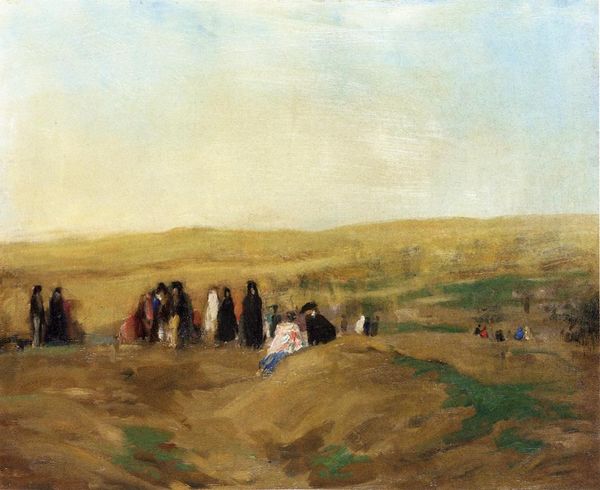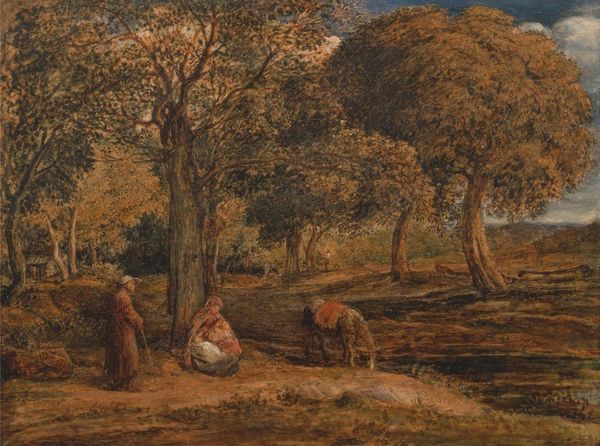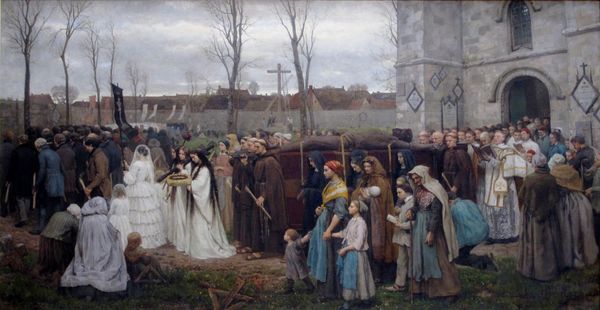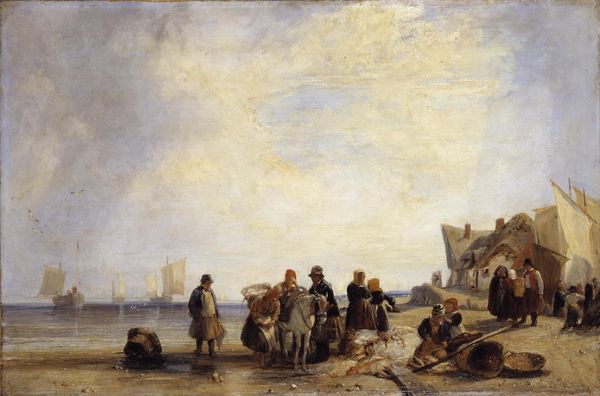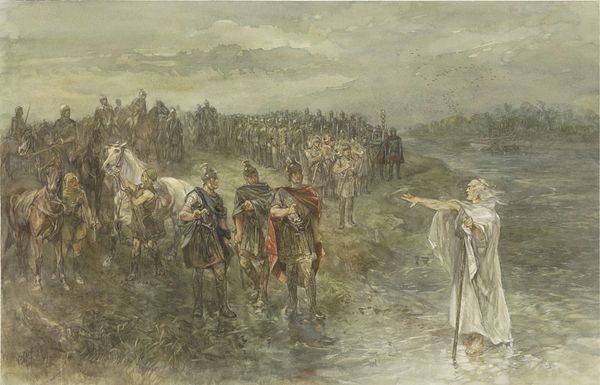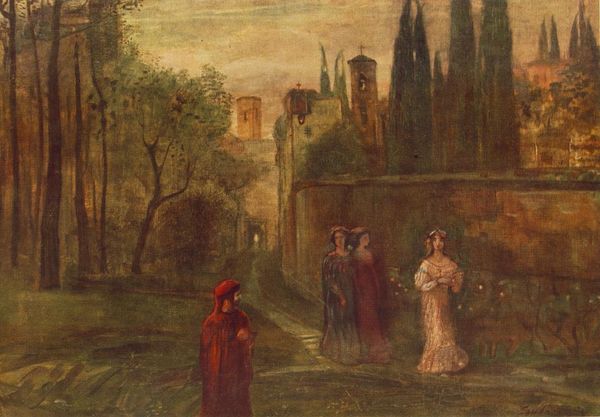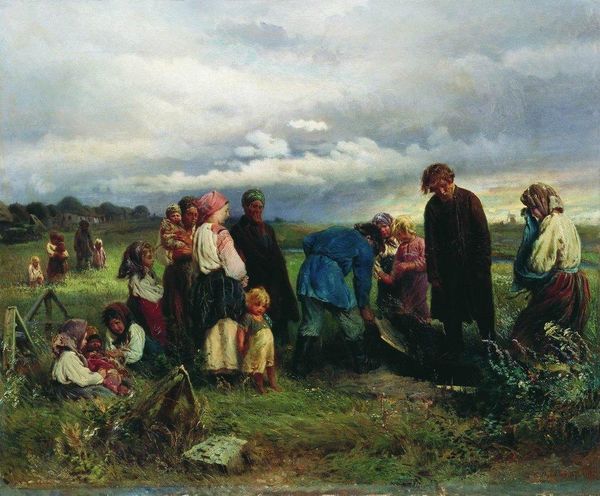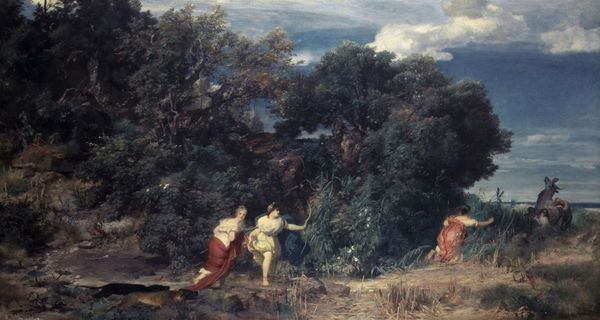
Monniken begeven zich naar een kerk, gadegeslagen door een groep Germanen 1871
0:00
0:00
charlesrochussen
Rijksmuseum
Dimensions: height 432 mm, width 605 mm
Copyright: Rijks Museum: Open Domain
Curator: I’m immediately struck by the ethereal, almost dreamlike quality of this piece. There's a certain softness, perhaps created by the watercolors, that lends it an air of unreality. Editor: Indeed. This watercolor and charcoal drawing by Charles Rochussen, created in 1871, is titled "Monks Going to Church, Watched by a Group of Germanic People". Rochussen, positioned as a notable genre and history painter, presents a nuanced depiction of the power dynamics at play. Curator: It's hard not to view this through the lens of colonization. I’m interested in unpacking the layered power dynamics implied. The monks’ pilgrimage becomes, not just a spiritual act, but one loaded with cultural imposition. Editor: Absolutely. Rochussen's work encapsulates a fascinating tension through the labor-intensive process of layering watercolor and charcoal, creating subtle, yet impactful depictions of power. This technique also suggests that there has to be multiple drawing sessions to create this effect on a white ground, adding more material relevance to our understanding. Curator: What truly grips me is the positioning of the Germanic people. They’re rendered not as active participants, but as onlookers. What do we know about what artistic freedoms Rocchussen might or might not have had as a professional at the time he was drawing this? Editor: Well, the period would have imposed certain constraints, absolutely. Rochussen likely catered to a market with particular historical expectations, particularly if this was commissioned. Curator: Looking at this image within the framework of art history, it's positioned within the Romanticism movement. I think we have to challenge Romanticism's tendencies to romanticize power structures through this artwork's historical context of missionary work to really dig into its complicated message. Editor: That’s right. Rochussen also uses his chosen medium very purposefully to illustrate labor, class, and value. Romanticism seems secondary when you center the means of creating such powerful propaganda. The application of thin washes creates a specific look. It's calculated. Curator: By paying closer attention to these visual and material decisions, we can interpret an artwork like "Monks Going to Church" with new perspective, inviting further research and consideration beyond the aesthetic, to encompass those marginalized in its narrative. Editor: Examining the material choices Rochussen made adds critical perspective. The act of looking reveals deeper power dynamics at play within this seemingly simple historical scene.
Comments
No comments
Be the first to comment and join the conversation on the ultimate creative platform.
